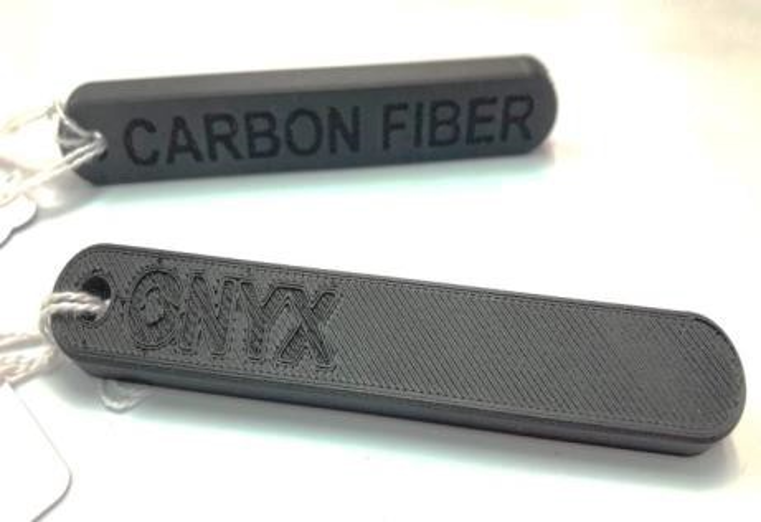Need fire-resistant materials for your next prototype? Safety and durability is crucial in design manufacturing in case of any incidents or emergencies.
Materials play a key role in enhancing safety, with many industries relying on fire and heat retardant options to meet strict safety standards.
In this article, we will explore what makes heat resistant and fire-retardant materials work, how to get them and their applications across various industries.
WHAT ARE FIRE-RESISTANT MATERIALS?
Heat Resistance
Heat-resistant materials are engineered to withstand high temperatures without breaking down, deforming, or losing their structural integrity. These materials are ideal for applications where prolonged exposure to elevated temperatures is expected.
They do not necessarily prevent combustion but can tolerate extreme heat without suffering significant damage. Heat resistance is essential for components used in high-temperature environments, such as engines, ovens, or aerospace systems.
Flame Resistant

Flame-resistant materials are engineered to resist ignition and can endure exposure to flames without burning or melting easily. These materials are engineered to resist ignition without relying on chemical treatments.
If ignited, they are designed to self-extinguish, significantly reducing fire hazards and ensuring improved safety and reliability.

Fire Retardant
Fire retardant materials or treatments are applied to objects to reduce the likelihood of ignition or slow the burning process. These materials are often treated with chemicals that create a protective barrier or limit the release of flammable gases.
They may also react with fire to produce non-combustible gases like water vapour or carbon dioxide. Fire retardant materials do not necessarily prevent a material from catching fire, but they do delay ignition and reduce the intensity and speed at which a fire can grow.
ARRK OFFERS FIRE AND HEAT RETARDANT MATERIALS
We have a variety of materials that are heat resistant, flame retardant and able withstand high temperatures.
1.Polycarbonate (PC)
PC is a versatile thermoplastic known for its high impact strength and flame resistance. When blended with ABS (Acrylonitrile Butadiene Styrene), it offers an enhanced combination of durability, flame retardancy, and high-temperature stability.
Fire-retardant additives in these plastics help to slow down the spread of fire, ensuring a safer and more reliable product in applications like circuit boards, electrical enclosures, and vehicle interiors.
2.Polyurethanes (PU)
PU materials, especially ABS-like polyurethane resins, are ideal for rapid prototyping in applications requiring thermal insulation and fire safety. These materials offer heat resistance in the range of 120°C to 200°C, making them suitable for high-heat environments.
When flame retardant additives are incorporated, PU can slow down combustion, improving overall fire safety. This combination of heat resistance and flame retardancy makes PU materials an excellent choice for industrial, automotive, and electronics prototyping, where safety and performance are critical.
3.Thermoplastics
Thermoplastics like Bakelite, POM (Polyoxymethylene), and PEEK (Polyether Ether Ketone) are known for their stability at elevated temperatures. These materials do not melt or warp when exposed to high heat, making them ideal for applications requiring long-term thermal stability.
Bakelite is commonly used in electrical insulators, while POM and PEEK are utilised in heat shields, high-performance gears, and circuit boards. Their high heat resistance allows them to retain structural integrity in environments where temperatures frequently exceed 150°C to 300°C, without compromising on performance. These materials can be crafted with our CNC machining services.
4.Carbon Fibre

Carbon fibre and its hybrids, such as carbon-Kevlar and carbon-glass fibre composites offer excellent heat resistance. This capability can be achieved through CFF (Continuous Fibre Fabrication), a 3D printing technique that facilitates the production of detailed components.
Carbon fibre is inherently heat resistant, but when paired with specialised resins such as Onyx FR enhances its flame resistance to meet UL94 V-0 standards. This combination creates a lightweight yet sturdy solution suitable for high-temperature and fire-sensitive environments, offering both performance and safety.

APPLICATIONS OF FIRE AND HEAT RETARDANT MATERIALS
These materials are utilised in consumer electronics, automotive parts, and aerospace and defence industries due to their ability to resist combustion and sustain performance in heat-intensive environments.
Automotive Industry
Electric vehicles (EVs) and other modern cars experience considerable heat buildup, primarily in the battery compartments and electrical components. Fire-retardant polymers are essential in battery enclosures to help prevent thermal runaway, a chain reaction caused by overheating in lithium-ion batteries. When these batteries are subjected to extreme temperatures, they can ignite, posing safety risks.
Extreme weather conditions could potentially cause these batteries to ignite, posing a significant safety risk. By incorporating fire-retardant and heat-resistant materials, it can prevent the spread of fire and ensure passenger safety in the event of an accident or malfunction.
This applies for EV charging stations installed outdoors, as we highlight key safety design features of enclosures. Fire-retardant polymers are also essential in electrical wiring insulation and interior panels, further enhancing vehicle safety.
Consumer Electronics
Wi-Fi Routers, smartphones, laptops, televisions and other electronics generate heat during prolonged operation, requiring materials that can dissipate heat and prevent ignition. Materials like flame-retardant ABS and polycarbonate are widely used in electronic components and enclosures to manage this heat.
These materials not only resist high temperatures but also provide safety by slowing down or preventing the spread of fire in the event of a malfunction. This is critical for protecting consumers from potential hazards like overheating batteries or electrical shorts, while also ensuring the devices remain durable under repeated heat cycles.
Aerospace and Defense
Aircrafts face intense thermal stress due to high altitudes, extreme temperatures and high speeds during takeoff, landing and long journeys in different fluctuating temperatures. Fire-retardant composites and high-temperature alloys are often used in critical components like fuselages, engines, and heat shields, ensuring both fire protection and mechanical stability.
In the defence sector, military vehicles and equipment must also endure harsh environments, from extreme heat to fire hazards on the battlefield, making fire-retardant materials crucial for both safety and operational efficiency.
BUILD SAFE AND DURABLE PROTOTYPES WITH ARRK ASIA
We offer a wide range of heat-resistant and high-temperature materials for extreme thermal environments. With our expertise, get solutions for the right materials for maximum durability and safety in your project performance. Get in touch with us today!





